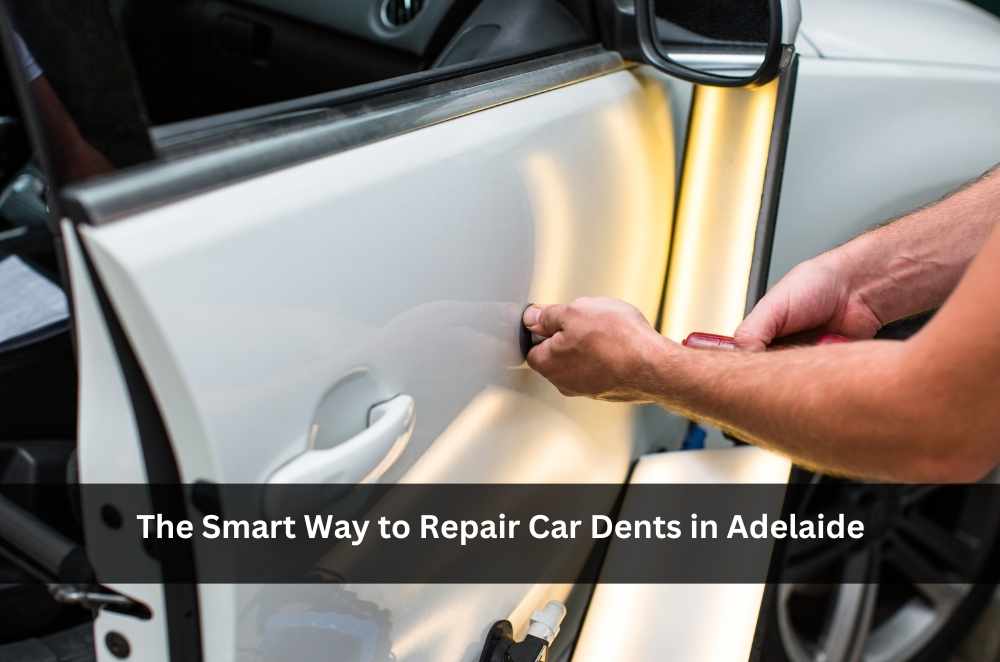
Car dents can turn up when you least expect them — in the car park at Coles, under a gum tree during a windy night, or even after a quick visit to a mate’s house. No matter how careful you are, a dent is often an unavoidable part of owning a vehicle. But does that mean you’re stuck with it? Not at all.
If you're wondering what to do about that unsightly dent on your car door, the good news is that car dent removal service options today are more advanced, less invasive, and more accessible than ever, especially if you live near Salisbury or the northern suburbs of Adelaide.
Understanding what causes dents and how they affect your car
Dents come in many forms — from small dings to wide panel impressions — and each has a different impact depending on location and severity. Some of the most common culprits include:
Shopping trolleys bouncing off doors in tight carparks
Flying debris during windstorms or along highways
Hailstones pelting down during seasonal weather spikes
Misjudged turns in tight garages or driveways
While many of these incidents don’t cause structural damage, they do affect the aesthetics of your car and, in some cases, its resale value.
Plus, dents can lead to issues over time. When a panel is compromised, the paint may begin to crack, moisture can seep in, and rust becomes a real threat. That’s why prompt, proper repair is so important — even for something that looks minor at first glance.
What is paintless dent repair, and how does it work?
Paintless Dent Repair (PDR) is a technique that’s transformed the dent repair game. Rather than sanding, filling, or painting, technicians use a series of rods and tools to gently push the metal back into shape, from behind the panel.
This approach preserves your original paint and allows for:
A faster turnaround
Less disruption to your daily schedule
No risk of mismatched paint finishes
Environmentally friendlier results (no chemicals or repainting)
The effectiveness of PDR depends on whether the dent meets a few criteria:
Paint is still intact
Dent is accessible from behind
No deep creases or sharp folds in the metal
If those boxes are ticked, PDR could be your best option.
When you should consider hail damage repair methods
One of the most common types of minor vehicle damage in Australia is hail-related, and after a storm, it’s not uncommon to see dozens of vehicles dimpled like golf balls. That’s where understanding the hail damage repair process becomes essential.
This process usually involves:
A comprehensive inspection under controlled lighting
PDR wherever possible, especially for small hail dents
Blending and soft pushing to maintain the panel's original shape
Occasional panel replacement if damage is too widespread
Specialist hail damage repairers are equipped to deal with multiple dents in a way that minimises impact on your car’s finish and structure. It’s not a job for general panel shops — you want techs who understand the subtle techniques needed for soft metal manipulation across many areas of your vehicle.
Simple tips to keep your panels looking pristine
Once your car is dent-free, keeping it that way becomes the next priority. Even though accidents happen, there are habits that can dramatically reduce your chances of future damage:
Choose end spots in car parks to limit exposure to trolleys and doors
Avoid parking beneath trees during high winds or storms
Leave plenty of buffer space in garages and carports
Teach younger drivers and kids about car proximity awareness
Regularly wax your car — it helps create a buffer against light impacts
And when in doubt, it helps to be armed with auto body repair tips that give you the confidence to respond smartly to any surface damage, whether it’s a scratch, ding, or light scrape.

How to choose the right repair option for your needs
Choosing a dent repair provider isn’t just about location — it’s about method, trust, and proven outcomes. A good provider will offer:
Honest assessment of whether PDR is suitable
Transparency around repair time and outcomes
Clear before-and-after photos or examples of previous work
Patience in explaining the process, especially for first-timers
It’s also smart to ask whether they specialise in one method or offer multiple repair options. While some may only do PDR, others can combine it with spot painting or full panel repair if needed.
Another tip? Don’t be afraid to walk away if the quote feels rushed or the process isn’t fully explained. Your vehicle is a big investment, and every panel deserves care.
Why it pays to act quickly on dents
Delaying a repair can make things worse. Small dents, if left unchecked, can:
Lead to rust if protective coatings are breached
Impact panel alignment over time
Reduce your resale appeal during trade-in or private sale
Trigger further paint issues, especially with repeated sun exposure
It might be tempting to ignore a dent for a few months, especially if it’s out of sight, but proactive maintenance always wins out in the long run. Repairing small issues now means avoiding major headaches later.
Final thoughts: fixing dents the smart way
If you’ve discovered a dent, here’s your best course of action:
Take a few clear photos from different angles
Contact a local repair service for an initial inspection
Ask whether PDR is an option before considering panel replacement
And most importantly, seek out technicians who value your car as much as you do.
As a general rule, look for businesses that are transparent, locally trusted, and aligned with good practice guides, such as those found in a vehicle damage assessment framework.
Getting dents repaired doesn’t need to be a drama. With the right help, you’ll be back on the road — and back to admiring your reflection in that flawless finish — before you know it.




Write a comment ...